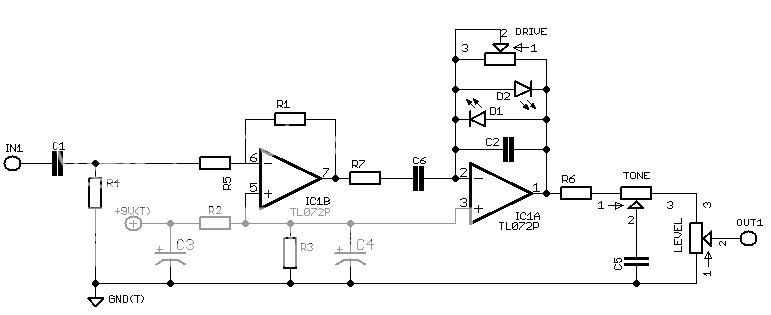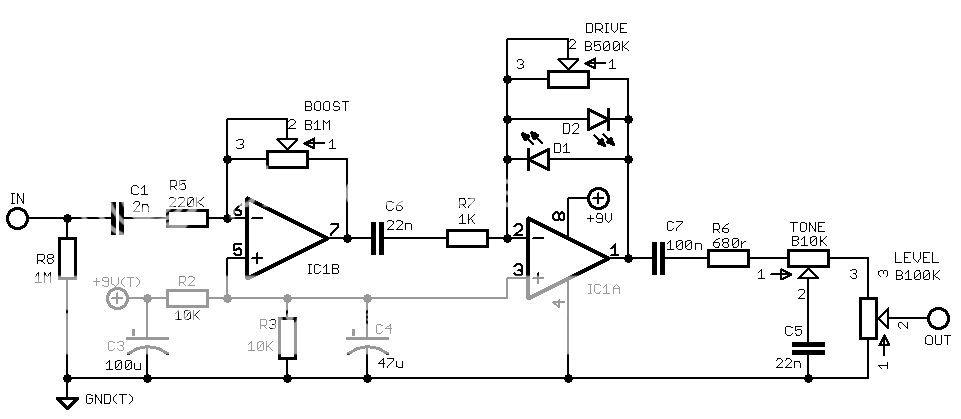Second, I've been wanting to play around a simple circuit like the HAO Rust Driver, and use the first op-amp as a booster, but with a HPF in front of it, and the second op-amp would be set up similar to a tubescreamer. Here's what I've got so far, schematic wise: https://i2.photobucket.com/albums/y50/P ... Rusty2.png
I'm unsure of what, if anything, should go in the highlighted sections. I'll probably want to add some sort of treble roll off tone section somewhere in there too.
What would be a good starting value for the resistor in the boost section between pins 6 & 7?
The reason I"m doing this is because I like how the Rust Driver sounds, but I would like for the gain to be adjustable, and I would also like to shape the frequency response of the boost more to my tastes. The way I would describe the sound I'm after would be something like a Crunchbox being boosted by an SD-1 to tighten things up.
Am I on the right track with how to achieve my goal, or am I going to be way off?



